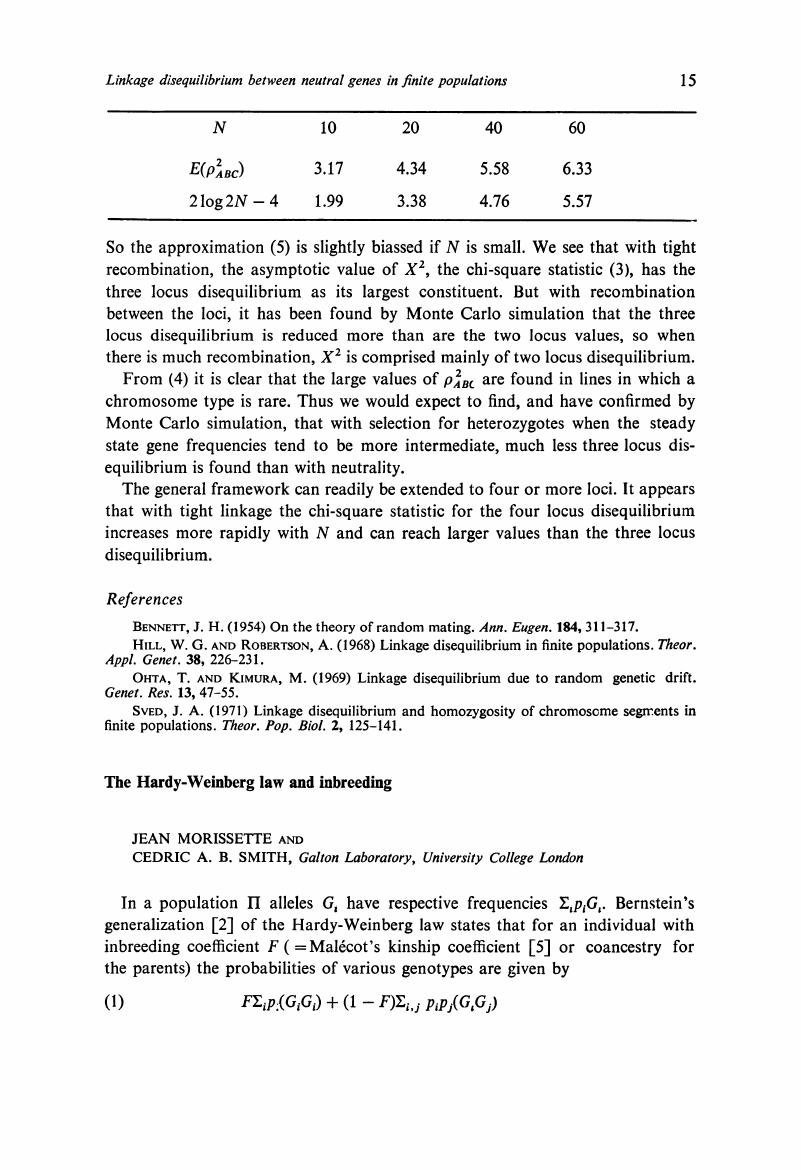No CrossRef data available.
Article contents
The Hardy-Weinberg law and inbreeding
Published online by Cambridge University Press: 01 July 2016
Abstract
An abstract is not available for this content so a preview has been provided. Please use the Get access link above for information on how to access this content.

- Type
- Research Article
- Information
- Copyright
- Copyright © Applied Probability Trust 1974
References
[1]
Barrai, I., Cavalli-Sforza, L. L. and Moroni, A. (1962) Frequencies of consanguineous marriages and mating structure of the population. Ann. Hum. Genet.
25, 347–377.CrossRefGoogle ScholarPubMed
[2]
Bernstein, F. (1930) Fortgesetze Untersuchungen über die erblichen Blutstrukturen des Menschen. Z. Ind. Abst. Vererb.-Lehre
37, 237–270.Google Scholar
[3]
Hajnal, J. (1963) Random mating and the frequency of consanguineous marriages. Proc. Roy. Soc. B
159, 125–174.Google ScholarPubMed
[4]
Haldane, J. B. S. (1950) The association of characters as a result of inbreeding and linkage. Ann. Hum. Genet.
15, 15–23.Google Scholar
[6]
Smith, C. A. B. (1970) A note on testing the Hardy-Weinberg Law. Ann. Hum. Genet.
33, 377–383.Google Scholar
[7]
Wahlund, S. (1928) Zusammensetzung von Populationen und Korrelationserscheinungen von Standpunkt der Verebungslehre aus betrachtet. Hereditas
11, 65–106.Google Scholar


